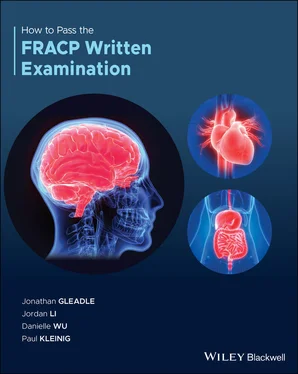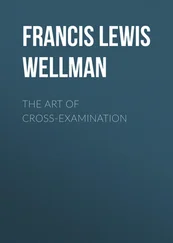DH is characterised by its intense pruritus. Because of severe itching, intact vesicles are rarely seen. DH has a symmetrical distribution. The location of the lesions aids in the diagnosis. Lesions are most commonly seen on the extensor surfaces of knees, elbows and on buttocks. Lesions are seldom seen on the face, neck, scalp, palms, or soles.
DH diagnosis is based on typical clinical picture and demonstration of IgA deposition in papillary dermis. DH usually has a good prognosis, with the majority of patients responding well to a strict gluten‐free diet and medication.

Salmi T. Dermatitis herpetiformis. Clinical and Experimental Dermatology. 2019;44(7):728–731.
https://onlinelibrary.wiley.com/doi/full/10.1111/ced.13992
3. Answer: A
This patient has erythema nodosum which is likely secondary to previously undiagnosed Crohn’s disease which can be hypothesised from her history of mouth ulcers, abdominal pain, diarrhoea, and microcytic anaemia. Her serum calcium level is normal and CXR is normal which does not suggest sarcoidosis. There is also no lymphadenopathy or hepatosplenomegaly to suggest lymphoma.
Erythema nodosum is the most common type of panniculitis. Generally, it is idiopathic in 50% of cases, however there are many possible causes ( Table 3.1). Erythema nodosum often occurs in association with granulomatous disease including sarcoidosis, tuberculosis, and granulomatous colitis. The hallmark of erythema nodosum is painful, tender, erythematous, subcutaneous nodules that typically are located symmetrically on the anterior surface of the lower extremities and is a nonspecific cutaneous reaction pattern to a variety of antigens.
Table 3.1 Common causes of erythema nodosum.
| Infection |
| Streptococcal pharyngitisMycoplasmaTuberculosisSyphilisViral infection: HSV, EBV, hepatitis B and C, HIV |
| Inflammatory bowel disease |
| Ulcerative colitisCrohn’s disease |
| Sarcoidosis |
| Drugs |
| Antibiotics: sulfonamides, amoxicillin; oral contraceptives |
| Lymphoma and other malignancies |
Evidence supports the involvement of a type IV delayed hypersensitivity response to numerous antigens. Erythema nodosum represents an inflammatory process involving the septa between subcutaneous fat lobules, with an absence of vasculitis and the presence of radial granulomas. These nodules tend to be self‐limiting; they do not ulcerate and usually resolve without atrophy or scarring. Pain can be managed with NSAIDs and prednisolone (1 mg/kg) may be used until the erythema nodosum resolves if underlying infection has been excluded. However most importantly, any underlying causes should be treated.

Chowaniec M, Starba A, Wiland P. Erythema nodosum – review of the literature. Reumatologia/Rheumatology. 2016;2:79–82.
https://www.termedia.pl/Erythema-nodosum-review-of-the-literature,18,27671,1,1.html
4. Answer: A
The combination of palpable purpura, arthritis/arthralgia, abdominal pain. and haematuria in a young person is highly suggestive of Henoch‐Schonlein (HSP) or IgA vasculitis. HSP is an immune‐mediated vasculitis associated with IgA deposition. Skin biopsy shows leukocytoclastic vasculitis with IgA staining of superficial dermal vessels. Some degree of renal involvement is seen in 35 to 54% of adult patients. Renal biopsy primarily shows IgA deposition in the mesangium in both HSP and IgA nephropathy suggesting similar pathogenesis.
The majority of HSP cases are preceded by an upper respiratory tract infection suggesting a potential infectious trigger. Streptococcus, staphylococcus, and parainfluenza are the most commonly implicated pathogens.
Diagnosis of HSP is based on the presence of purpura (palpable) or petechiae (without thrombocytopaenia) with lower limb predominance (mandatory criterion) plus at least one of the following four features: (i) abdominal pain, (ii) arthritis or arthralgia, (iii) leukocytoclastic vasculitis or proliferative glomerulonephritis with predominant deposition of IgA on histology, (iv) renal involvement (haematuria, red blood cell casts, proteinuria). Laboratory tests focus on assessing renal involvement (urinalysis, urine microscopy, proteinuria, serum creatinine).
There are no blood tests specific for HSP. Although the IgA system plays a central role in the pathophysiology, measurement of serum levels of total IgA is not helpful in confirming the diagnosis or providing prognostic information. Galactose‐deficient IgA1 serum levels seem to distinguish patients with HSP nephritis from patients without nephritis.
Gastrointestinal involvement is relatively common with typical colicky abdominal pain. In a recent case series, main clinical manifestations were abdominal pain (100%), nausea and vomiting (14.4%), melaena and/or rectorrhagia (12.9%), and positive FOBT (10.3%). Symptoms are caused by bowel ischemia and oedema. Serious complications include infarction and perforation. Descending duodenum and the terminal ileum are frequently involved, with endoscopic features including diffuse mucosal redness, petechiae, haemorrhagic erosions, and ulcers. CT scan features are commonly bowel wall thickening with engorgement of mesenteric vessels.
Patients with HSP usually do not have thrombocytopenia. It is extremely rare that patients with HSP also have positive ANCA and MPO. If present, patient usually have severe and rapid progressive renal failure. It has been suggested these patients should be treated with high dose steroid and cyclophosphamide.
Management of HSP includes supportive care, symptomatic therapy and, in some cases, immunosuppressive treatment. Immunosuppressive treatment of HSP nephritis is used in patients with severe kidney involvement (nephrotic range proteinuria and/or progressive renal impairment). In these cases, renal biopsy should be considered before treatment. Mild renal involvement (microscopic haematuria or mild proteinuria) does not require biopsy or immunosuppressive treatment.
In patients with rapidly progressive glomerulonephritis or nephrotic syndrome (usually accompanied by crescents on kidney biopsy), pulsed intravenous methylprednisolone followed by 3‐ to 6‐month course of oral steroids is most commonly used. A current KDIGO guideline suggests adding cyclophosphamide to steroid treatment for crescentic IgA glomerulonephritis.

Audemard‐Verger A, Pillebout E, Guillevin L, Thervet E, Terrier B. IgA vasculitis (Henoch–Shönlein purpura) in adults: Diagnostic and therapeutic aspects. Autoimmunity Reviews. 2015;14(7):579–585.
https://www.sciencedirect.com/science/article/abs/pii/S1568997215000361?via%3Dihub
5. Answer: A
The malignant transformation of melanocytes into melanoma is due to a complex interaction between exogenous and endogenous triggers as well as tumour‐intrinsic and immune‐related factors. Cutaneous melanomas carry a particularly high mutational load and harbour a high number of ultraviolet‐signature mutations, such as C→T (caused by ultraviolet B) or G→T (caused by ultraviolet A) transitions. Although many pathogenetically relevant mutations in melanoma are assumed to originate from a direct mutagenic effect of ultraviolet B and A, indirect effects such as the production of free radicals resulting from the biochemical interaction of ultraviolet A with melanin also cause mutations and genetic aberrations.
Читать дальше















